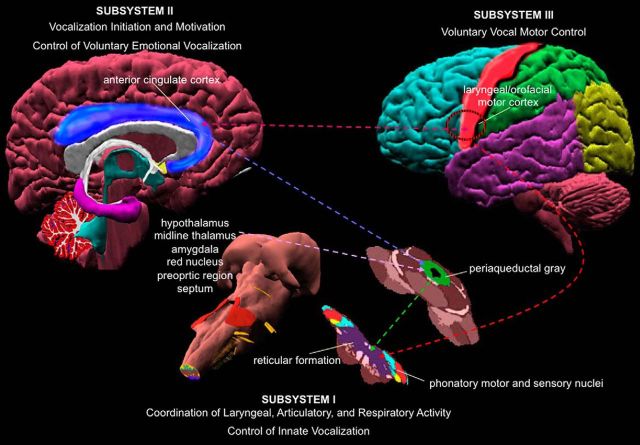Figure 1.
Hierarchical organization of the dual pathway of central voice control. The lowest level (subsystem I) is represented by the sensorimotor phonatory nuclei in brainstem and spinal cord, which control laryngeal, articulatory, and respiratory muscles during production of innate vocalizations. The higher level within this system (subsystem II) is represented by the periaqueductal gray, cingulate cortex, and limbic input structures that control vocalization initiation and motivation as well voluntary emotional vocalizations. The highest level (subsystem III) is represented by the laryngeal/orofacial motor cortex in the vSMC with its input and output regions that are responsible for voluntary motor control of speech production. Dotted lines indicate direct connections between different regions within the voice-controlling system. Data from Simonyan and Horwitz (2011).

